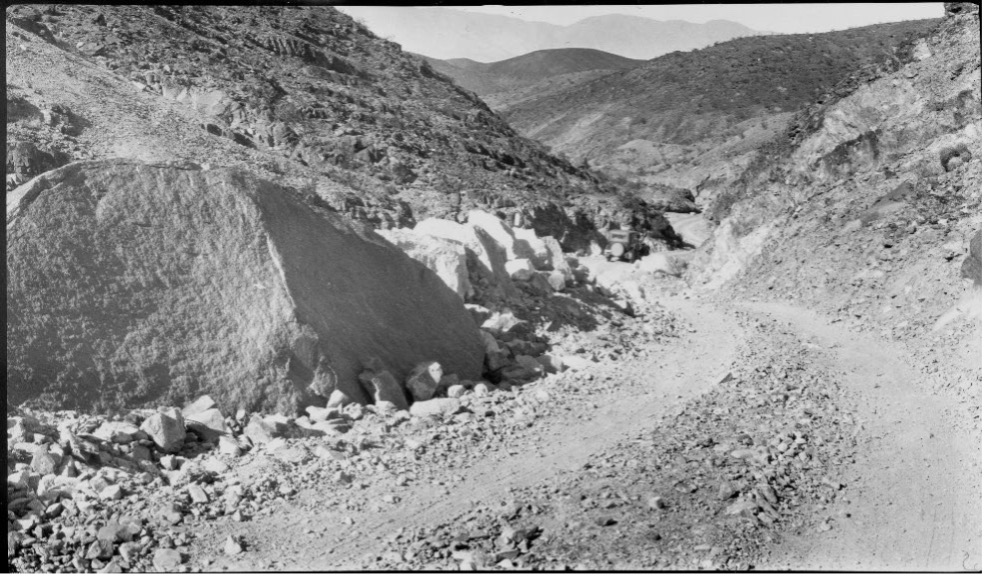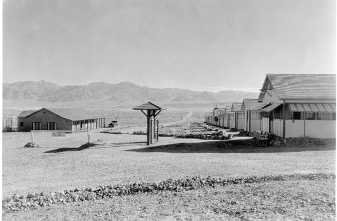
Photo by Burton Frasher Sr.
Have you ever driven along Highway 190 from Stovepipe Wells towards Panamint Springs? Did you know that was the first graded road in Death Valley? It’s true! That section of Highway 190 began as the Eichbaum Toll Road, the first graded road intended to bring automobiles into Death Valley.
Decades before he built the toll road into Death Valley, H.W. “Bob” Eichbaum prospected in Rhyolite. At that time, the Rhyolite-Skidoo stagecoach line was in full force. This route cut across the sand dunes to connect people between mining districts.
Despite a lack of success in Rhyolite, Eichbaum became attached to the beauty of the region. He built his acclaim and fortune managing tourist enterprises in the city of Venice, California and on Catalina Island before finding his way back to Death Valley. He remembered how important Stovepipe Wells was for any miners or travelers through the region, and he wanted to develop the rest stop into a tourism venture.

Even if Eichbaum built the world’s best resort, he knew it would fail without proper means of transportation, and he was determined to build good access roads to his resort location. His initial proposal was a series of two toll roads: one from Darwin Wash into Stovepipe Wells, and another from the south end of Death Valley through Furnace Creek. Eichbaum planned for the two roads to meet up, together spanning the width of Death Valley, including the Pacific Coast Borax properties at Furnace Creek. The company opposed the idea of paying tolls to access their own properties, and they shot down Eichbaum’s idea.
It took six months for the Inyo County Board of Supervisors to approve his proposal. Once approved, Eichbaum and his crew surveyed the path from Towne Pass into Death Valley and over the sand dunes. Over the course of the survey process, Eichbaum skirted major obstacles to find the path of least resistance, which resulted in a winding and treacherous road.
The location of modern of Stovepipe Wells was less intentional and more of the result of circumstances. Eichbaum intended to follow the straight line across the sand dunes that the Rhyolite-Skidoo stage line had used decades prior. Instead, he found it impossible to maintain a graded road with the constantly shifting sands. Because of this, Eichbaum stopped his road at the sand dunes, establishing Stovepipe Wells where we know it today and dubbing the original well site “Old Stovepipe Wells.”

Even though the toll road was difficult for most average cars, it was the first direct route into Death Valley from Los Angeles. It led to a resort with many amenities, including automobile tours that Eichbaum arranged himself. The 1927 Easter service on the dunes drew in crowds from all over and was later published in various newspapers and magazines to sing the praises of how accessible Death Valley was.
Accessing Death Valley was long the biggest challenge for tourism, but H.W. Eichbaum’s toll road set off a movement that led to Death Valley’s designation as a National Monument in 1933. The exact alignment of the road has changed to make it a safer journey for us, but the purpose of the road remains the same–to connect visitors to the beauty of Death Valley.
